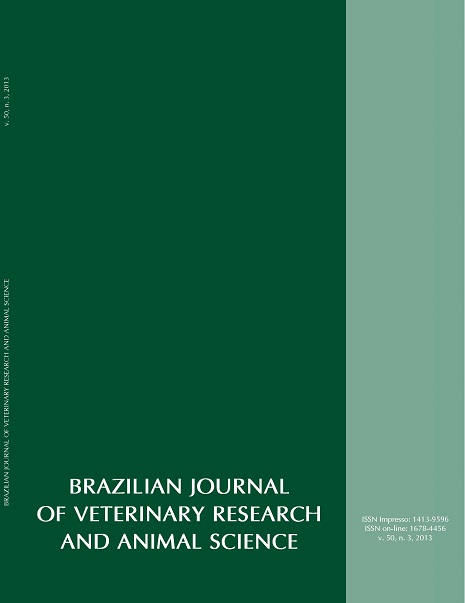Morphological patterns and malignancy criteria of transmissible venereal tumor in cytopathological and histopathological exams
DOI:
https://doi.org/10.11606/issn.1678-4456.v50i3p238-246Keywords:
Dog, Round cell tumor, MorphologyAbstract
The aim of this study was to identify morphological patterns and malignancy criteria of the TVT in cytopathological and histopathological evaluations and relate these characteristics to clinical evolution and response to chemotherapy. Regarding studied animals, sixteen dogs were female and four were male. The age of the animals ranged between one and ten years old. Considering breed, 80% of the dogs were mongrel dogs and 20% were of other breeds. It was found that the cytological samples allowed a better characterization of the cell type than histological ones. The plasmacytoid was the most common morphological type of TVT, followed by the lymphocytoid and mixed standards. There was no difference among the scores for the malignancy criteria and morphological types of TVT. Regarding response to chemotherapy, no morphological type of the TVT showed any difference, but the TVT presents morphological peculiarities that may interfere with tumor behavior, especially those related to increased aggressiveness and that are observed in the plasmacytoid TVT.Downloads
Download data is not yet available.
Downloads
Published
2013-06-21
Issue
Section
UNDEFINIED
License
The journal content is authorized under the Creative Commons BY-NC-SA license (summary of the license: https://
How to Cite
1.
Lima CR de O, Rabelo RE, Vulcani VAS, Furtado AP, Helrigel PA, Brito LAB, et al. Morphological patterns and malignancy criteria of transmissible venereal tumor in cytopathological and histopathological exams. Braz. J. Vet. Res. Anim. Sci. [Internet]. 2013 Jun. 21 [cited 2024 Apr. 19];50(3):238-46. Available from: https://www.revistas.usp.br/bjvras/article/view/64629





